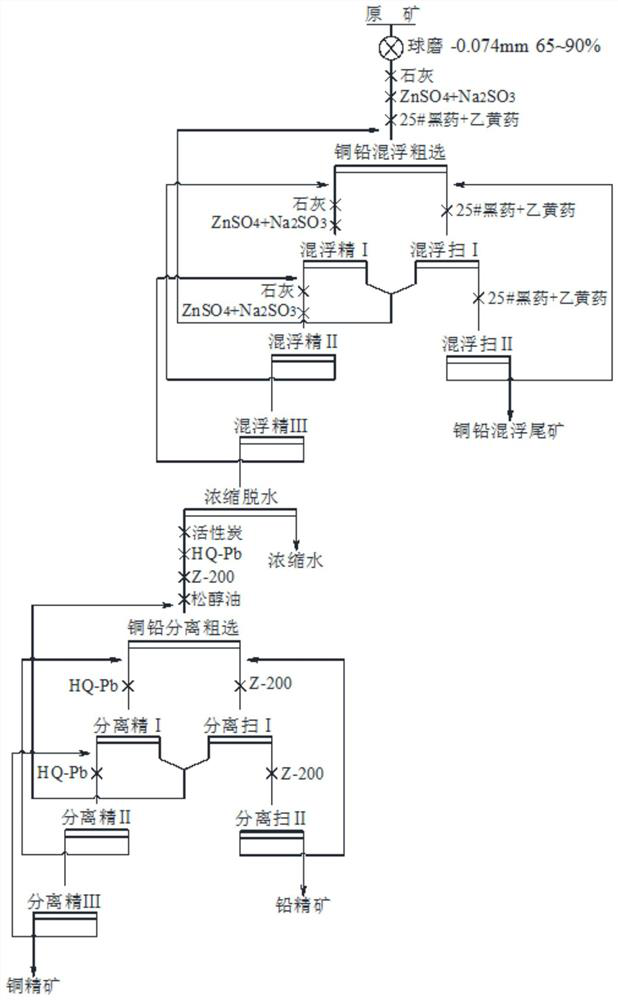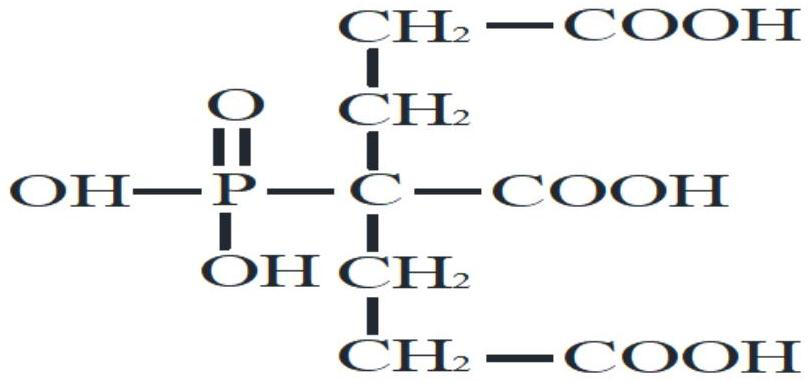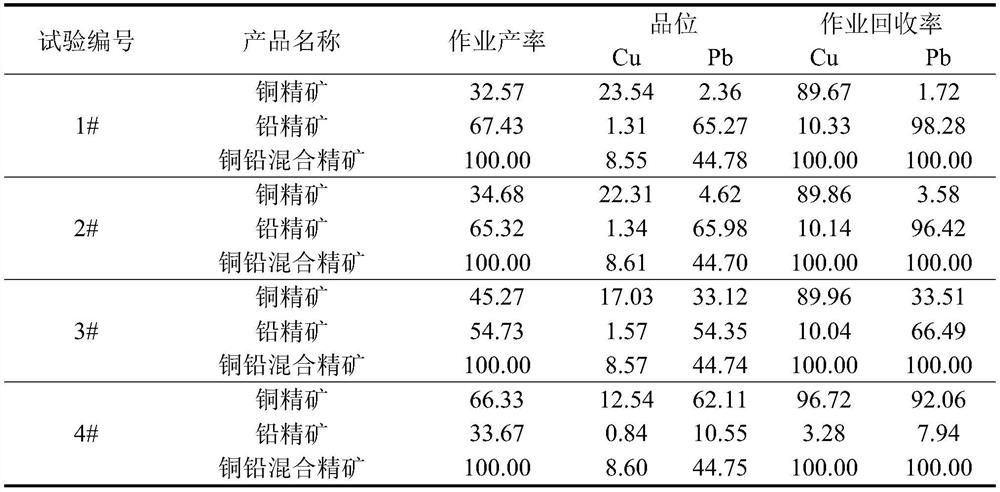A combined depressant for flotation separation of copper-lead sulfide ore and its application
A combination inhibitor and lead sulfide ore technology, applied in flotation, solid separation, etc., can solve the problems of unfriendly environment, high lead mutual content, high toxicity, etc., and achieve the effect of reducing difficulty and processing cost, and good water solubility
- Summary
- Abstract
- Description
- Claims
- Application Information
AI Technical Summary
Problems solved by technology
Method used
Image
Examples
Embodiment 1
[0032] In a complex copper-lead-zinc mine in Inner Mongolia, the raw ore contains 0.45% copper, 2.59% lead, and 3.35% zinc. Copper in the ore mainly exists in the form of primary copper sulfide and secondary copper sulfide, copper mainly exists in the form of chalcopyrite, and lead mainly exists in the form of lead sulfide. The intercalation of copper minerals and lead minerals is uneven in thickness, and their intercalation and symbiosis relationship is complex. The secondary copper ions in the ore produce copper ions during the grinding process, which activates some lead minerals and makes them more floatable, making the separation of copper and lead very difficult.
[0033] The sorting of copper and lead in this embodiment adopts the process flow of copper and lead mixed flotation-copper and lead separation. The raw ore is ground to -74μm by wet ball milling to account for 70%, then lime 1500g / t, zinc inhibitor zinc sulfate 1000g / t and sodium sulfite 500g / t, collector No. ...
Embodiment 2
[0056] A complex copper-lead-zinc polymetallic mine in Sichuan, the raw ore contains 0.38% copper, 2.65% lead, 4.65% zinc, 8.46% sulfur, and 116.64g / t silver, with high economic value. The copper in the ore is mainly primary copper sulfide ore, followed by secondary copper sulfide ore, free copper oxide and combined copper oxide ore. Lead sulfide is mainly galena. Copper and lead minerals are closely symbiotic, interpenetrated and wrapped, and the particle size of the embedded distribution is uneven. Gangue minerals are mainly quartz, mica, calcite, and a small amount of chlorite. Mica minerals are easy to muddy during the grinding process. At the same time, due to the high content of secondary copper sulfide, the dissolved copper ions activate galena, making it very difficult to separate copper and lead.
[0057] The sorting of copper and lead in this embodiment adopts the process flow of copper and lead mixed flotation-copper and lead separation. The raw ore is ground to ...
Embodiment 3
[0072] A complex copper-lead-zinc polymetallic mine in Yunnan, the grade of copper in the ore is 0.84%, the grade of lead is 2.51%, and the grade of zinc is 3.01%. Copper occurring in chalcopyrite accounts for 85.21% of the total copper in the ore. The lead in galena accounts for 89.34% of the total lead in the ore. The symbiotic relationship between copper, lead and zinc minerals is close. It is common for copper sulfide ores to be distributed in fine veins or sparsely disseminated in quartz cracks. The origin of galena is different from that of primary copper sulfide, and it is not closely related to the co-generation of pyrite and pyrrhotite, but the phenomenon of fragmentation is common, and lead is prone to over-crushing during the grinding process, and galena Closely related to clay minerals. The separation of copper and lead in this mine is more difficult.
[0073] The sorting of copper and lead in this embodiment adopts the process flow of copper and lead mixed flo...
PUM
 Login to View More
Login to View More Abstract
Description
Claims
Application Information
 Login to View More
Login to View More - R&D
- Intellectual Property
- Life Sciences
- Materials
- Tech Scout
- Unparalleled Data Quality
- Higher Quality Content
- 60% Fewer Hallucinations
Browse by: Latest US Patents, China's latest patents, Technical Efficacy Thesaurus, Application Domain, Technology Topic, Popular Technical Reports.
© 2025 PatSnap. All rights reserved.Legal|Privacy policy|Modern Slavery Act Transparency Statement|Sitemap|About US| Contact US: help@patsnap.com



